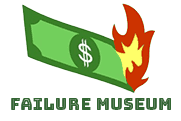GoBots was a line of transforming robot toys produced by Tonka from 1983 to 1987. The GoBots toys were part of the robot “sensation” that swept the nation for a short time. The line sold well initially but was overtaken by Hasbro’s Transformers.
Forever 21
Launched in 1984, Forever 21’s fast-fashion business model, which was based on quick-turnaround designs that could be inexpensively mass produced, proved wildly popular with young customers who didn’t have much money to spend but wanted the latest looks. By 2015, global sales peaked at $4.4 billion, with 480 stores occupying enormous spaces in malls across America.
They weren’t seeing the trends, and instead of slowing down on physical space, they were building up physical space. It wasn’t just the number of stores that was problematic, it’s also their size. Forever 21 stores were huge, with the average size at 38,000 square feet. Meanwhile, other chains were closing big stores and moving to smaller footprints and mini-shops to shrink costs and maintain consumer access to their brands.
The company also didn’t bolster its e-commerce platform, even though its core customers are young people who prefer to shop online. This led to its bankruptcy in 2025.
Drugstore.com
Drugstore.com, founded in 1998, was an early e-commerce platform for health and beauty products with over 60,000 items. It quickly rose to prominence, going public in 1999 and acquiring millions of customers.
Despite its early success, Drugstore.com struggled to attract new customers and increase transaction sizes. Drugstore.com faced numerous obstacles, including stringent regulations, particularly in the prescription drug market. These challenges limited its ability to compete effectively with established pharmacy benefit managers and retail pharmacies. The company also struggled with logistical issues, particularly in handling and distributing prescription drugs. Specialized requirements such as cold storage and the need for licensed pharmacists added layers of complexity that Drugstore.com found difficult to manage efficiently. After being acquired by Walgreens in 2011, it was shut down in 2016 to refocus on Walgreens.com.
Atomic Energy Lab
In 1950, the Atomic Energy Lab was launched by the A.C. Gilbert Company. It was a toy kit with real uranium ore allowing kids to make nuclear reactions at home using actual radioactive material.
TrackR
Launched in 2014 and discontinued in 2021, TrackR was a Bluetooth-based tracker that struggled to compete against the myriad of competitors including Apple AirTags.
With TrackR’s products tracking could be shared across multiple devices; there was family sharing so your phone could report on the presence of your partner’s bag; and if you lost your keys, the TrackR community could look for them on your behalf.
Skybell Video Doorbell
Launched in 2015, the Skybell video doorbell sends a live video feed to your smartphone when somebody presses the button, and allows you to initiate a two-way conversation with the person at your door. It installs in minutes and offers motion detection and on-demand video, but otherwise falls far short of the Ring. The SkyBell is missing a few important features such as cloud-based recording of calls and motion events, and its picture quality is barely adequate.
Ring is a more comprehensive and fully contained home security setup. Ring’s video doorbells also come with a customizable motion sensor, which is not available with Skybell. Whereas the Ring doorbell can be powered by either internal batteries or a low-voltage doorbell transformer, the SkyBell must be wired to a doorbell transformer using the two wires protruding from the back of the device. If your home is not currently wired for a doorbell you’ll have to run wires and install a transformer to use it.
Leeo Smart Alert Nightlight
Launched in 2015 and discontinued in 2019, the Leeo allowed you to use a couple of sensors and link it to actions that would give you text alerts and a phone call. For instance, it could listen for smoke alarms and call you when it heard them, or it can let you know when it got too humid or hot at your house. However, the company had the wrong business model as it only charged $50 for the device and had no recurring revenue. Plus they were unable to come up with additional products.
Tile (location tracker)
Launched in 2013, Tile was a square-shaped location-based tracker. It syncs to an app on a user’s smartphone, which sends the owner of a tracker an update on its location if the device is reported as lost or stolen. However, Tile didn’t have adequate safeguards to prohibit stalkers from using the products to follow victims’ movements in real time leading to various lawsuits.










